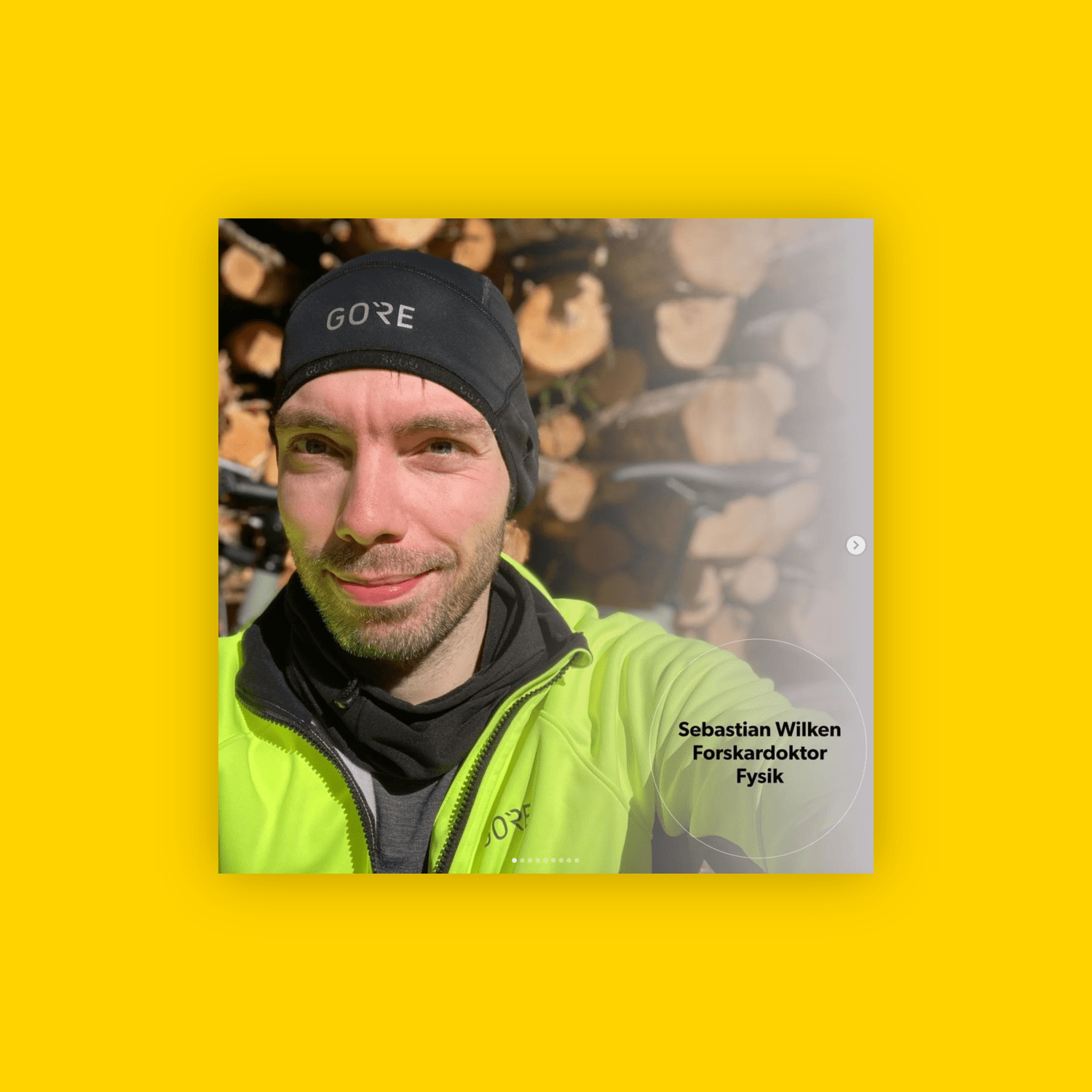Today I was part of the Fråga forskaren (“Ask the researcher”) campaign on the Åbo Akademi University Instagram channel. The idea is that researchers present their research in simple and understandable terms and people can then ask all sorts of questions in the story.
The nice little challenge for me – and probably for you, too – was that the whole thing is in Swedish. So, that’s why I have an English translation of the post here.
The climate crisis requires us to find new ways to produce energy. Organic solar cells are not only a cost-effective alternative to fossil fuels, but also have fascinating properties.
My name is Sebastian Wilken and I am from Germany, where I did my PhD at the University of Oldenburg. After having spent a year as a researcher in Sweden, I came to Åbo Akademi University and am now part of the Organic Electronics research group. Our goal is to understand how electronic processes work in organic semiconductors. These materials, consisting of carbon-based molecules and polymers, have several advantages over classical inorganic semiconductors such as silicon. For example, they are light as a feather, mechanically flexible and can be mass-produced in printing presses, just like a newspaper. They are also partially transparent – think of transparent screens or solar cells on window panes!
However, these cool features come at a price. Solar cells made of organic materials are not yet as good as their inorganic siblings. When we talk about solar cells, we are talking about converting light particles, known as photons, into electric current. In organic solar cells, this conversion consists of a chain of different elementary processes that occur in the nano world, i.e. on extremely small length scales and extremely short time scales.
Each process in the chain has an ‘evil twin’, a loss process called recombination. In my research project, I try to understand how recombination depends on the nanostructure of solar cells, their so-called morphology. For this purpose, I run computer simulations where the movement of each individual electron, generated by the absorption of a photon, is followed. The simulation predictions are then compared with experiments where the solar cell is bombarded with short laser pulses. In this way, we aim to find design criteria for better organic solar cells.
It was great to be the face of my university’s research for a day. I also received some inspiring questions. Many thanks to the Åbo Akademi social media team for the opportunity!
Reference
Postdoctoral researcher Sebastian Wilken talks about current research in physics at Åbo Akademi University. Fråga forskaren campaign on the Åbo Akademi University Instagram channel.
